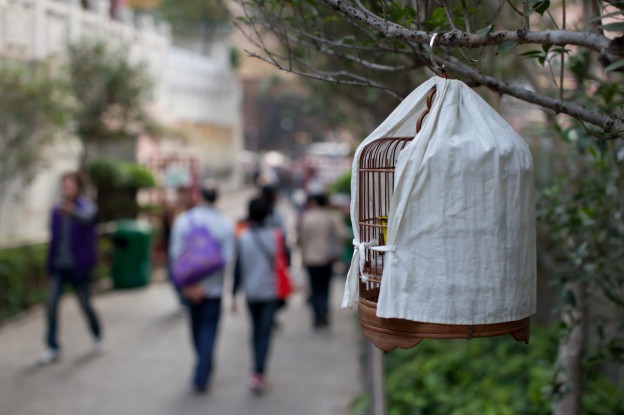I preach diversity.
It is woven throughout most of my work. I work on projects aimed to help diversify our industry and also write about trying to hold us accountable to it.
But, who holds me accountable? Am I practicing what I preach?
Awhile back I heard a great segment on On The Media with BuzzFeed writer Katie Notopoulos, who created a holiday called Unfollow a Man Day. The piece originally aired on the tldr podcast.
Check it out:
This all started when Notopoulos realized she was following a ton of dudes on Twitter, rather than other women and she decided to do something about it. She actively took steps to change the ratio on who she followed and that eventually led to the “holiday.”
She explains it here: Why I Created The #UnfollowAMan Movement
That got me thinking. Attempting to practice what I preach, I had already consciously been trying to diversify who I follow on Twitter for about the past year.
I never want to be caught in an echo chamber. I have also learned that I get a competitive advantage when I hear outside voices, instead of just hearing the same people from within the journalism industry.
But while my diverse follow was a conscious act, I still don’t know if I have struck the right balance.
So, why not find out? How can I expect others to change the ratio, if I am not doing it myself?
And that’s how my self-imposed gender audit began.
Diversifying the crowd
Late one night I began to put the nearly 1,000 people I follow on Twitter onto a male and female list. I decided to be public about the lists, in order to be transparent.
The first thing I immediately learned was that people notice if you put them on a list… and they get especially suspicious if you put them on one strictly tied to their gender.
I just got added to @webjournalist‘s Male list. Not sure what to make of that.
— Travis Swicegood (@tswicegood) August 29, 2014
After a few more curious tweets I whipped up a quick blog post explaining what I was attempting to do. I also eventually changed the name of the lists to Gender Audit Proj: Female and Gender Audit Proj: Male, to be more clear on what I am doing.
With the project I was hoping to achieve a couple of things:
- What is my actual ratio? Like I said before, if I am preaching diversity and parity, am I practicing it too? I don’t know, and that’s what I am looking to find out. This self-experiment really is a self-audit.
- In the interview with Notopoulos, she said she realized that some stories that were seen as newsworthy coming from “Twitter buzz,” were only a buzz for men. Meaning, because she followed dudes, dudes’ topics dominated. For me, inversely, I want to see what topics are not buzzing in my stream… or who is it buzzing with.
There is such a thing as Black Twitter, Latino Twitter, non-English Twitter… but most users don’t know (or care) because they follow people and communities they know… or reflect their experiences. (All of this has implications as Ethan Zuckerman points out in this piece looking at reactions to the story of Ferguson, Missouri on social media.)
Let me be clear about this project and how I use the social platform: Twitter and this audit are for me. I use Twitter as a tool that benefits my knowledge. And now, with this audit, I used Twitter lists to benefit me as well. I was dying to know the results to see if I can spot any patterns. I was coming in with no assumptions open to whatever results came.
And, for the record, I didn’t care if this was scientific or not. This was me grouping subjective follows along gender lines to see if anything emerges. I’m more a hackademic, not an academic anyway.
The results
Because the follows are displayed in chronological order, I immediately saw that my recent moves to diversify my follows was working… but overall I still have some work to do.
Now, after reading this post, I want to invite/challenge you to do the same thing.
Find out if your stream is skewed by following one community more than another… hell, check to see if you have a bias.
Let me know the results by tweeting out using the hashtag #GenderAudit. Others have already tried this and I’d love to add your results to the mix.
@webjournalist Audited my follows. 255 male, 115 female, 90 other (spoofs and, mostly, collectives/institutions, eg publications
— King Kaufman (@king_kaufman) August 29, 2014
My twitter-feed gender audit results: 149 male, 121 female, 120 other (group/spoof/etc). @webjournalist pic.twitter.com/G0TtLP0UFc
— Wendy Sawatzky (@wendysawatzky) August 29, 2014
@webjournalist My gender audit: Following 446 men, 409 women. Thanks for the idea.
— April Burbank (@aprilburbank) September 2, 2014
Related stories:
Steering Girls to Science and Tech Careers, by Katherine Krueger
The Rise (and Fall) of Female Editors, Julie Posetti
Steering Girls to Science and Tech Careers, by Tina Barseghian, MindShift
Robert Hernandez has made a name for himself as a journalist of the Web, not just on the Web. His primary focus is exploring and developing the intersection of technology and journalism – to empower people, inform reporting and storytelling, engage community, improve distribution and, whenever possible, enhance revenue. He is an Associate Professor of Professional Practice at USC Annenberg School for Communication and Journalism, but he’s not an academic… he’s more of a “hackademic” and specializes in “MacGyvering” Web journalism solutions. He has worked for seattletimes.com, SFGate.com, eXaminer.com, La Prensa Gráfica, among others. Hernandez is also the co-founder of #wjchat and creator of Learn Code for Journalism with Me project. He is currently serving on the Online News Association board and a lifetime member of the National Association of Hispanic Journalists.

